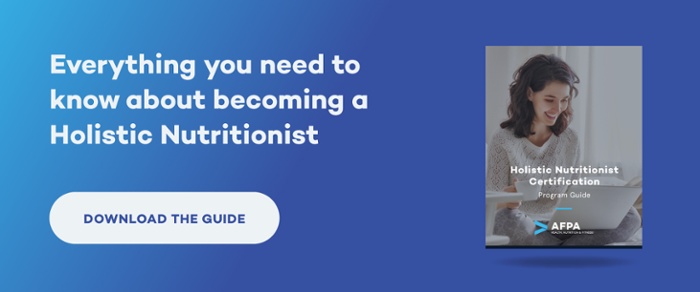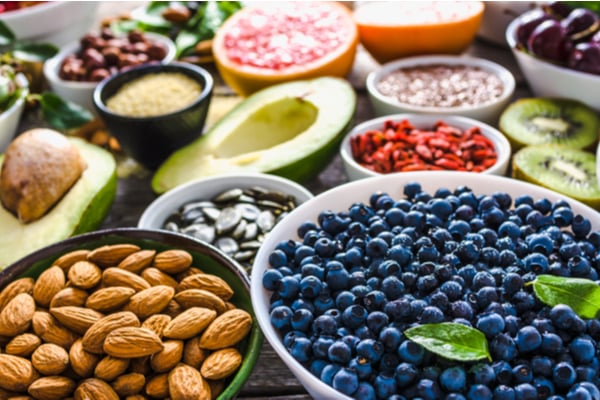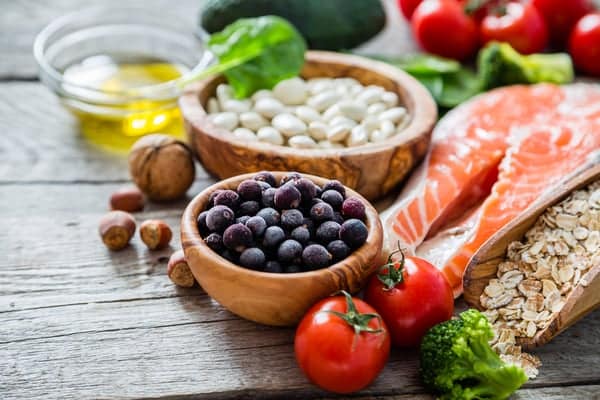Chefs, cooks, foodies, food historians, and other people passionate about food will tell you – condiments give life to food.
It isn’t unusual for health professionals to pay significantly more attention to the foods represented in national food guidelines (i.e. fruits, vegetables, grains, meats, plant-based protein foods, and oils) than to condiments that provide foods most of the flavor.
Condiments don’t exactly have a good reputation. Mainstream, popular condiments utilized in the west include ketchup, mayonnaise, BBQ sauce, syrups, soy sauce, and teriyaki sauce, which are flavorful but tend to be high in added salt and sugar.
When you or your clients are new to plant-based diets, learning to make healthier choices, or simply want to spice up their meals, it is important to remember that there is a world of nutrient-dense and flavorful condiments that can help make eating healthy delicious.
Here is a list of eight nutrient-dense condiments you can suggest to your clients to add flavor, character, and nutrition to their meals.
Become a Certified Holistic Nutritionist Online in 6 Months or Less
Mustard
Mustard is a condiment that is made by cracking, grinding, or bruising brown, yellow, or black mustard seeds and mixing them with water, vinegar, lemon juice, wine, or other liquids. Salt and other flavorings and spices are also added. The resulting color can range from light brown to bright yellow.
There are dozens of types of mustard, but some of the most popular are yellow mustard, dijon mustard, honey mustard, spicy brown mustard, hot mustard, and whole seed mustard (sometimes called whole grain mustard).
Mustard seeds are oilseeds, so they are rich in omega-3 oils and the endosperm (the hard part on the outside of the seed) provides fiber. Mustard oil is very rich in Vitamin A, and some researchers have even proposed its use as part of public health strategies to combat vitamin A deficiency.
Additionally, mustard seeds are exceptionally high in amino acids like phenylalanine, tyrosine, methionine, cysteine, leucine, valine, and lysine, making mustard a good complement to plant-based diets.
The characteristic mustard flavor is due to the presence of isothiocyanates which have potent anticarcinogenic properties. These isothiocyanates are made more bioavailable when added to cooked cruciferous vegetables like broccoli, cauliflower, cabbage, collard greens, and kale.
Interesting fact – the bitter and acidic flavor characteristic of mustard seeds is not perceived by the senses until the seeds are mixed with a liquid.
Nutritional Yeast
Nutritional yeast is the same species of yeast used to bake bread and brew beer, but it is grown under different conditions to be used as a food product where the yeast consumed is not alive. It has a cheesy, savory, or nutty flavor, which is what makes it such a great condiment.
In general, plant-based diets are nutrient-rich and can meet almost all nutrient needs through consuming a variety of foods. One of the few nutrients that are absent from plant-based foods is B vitamins.
Nutritional yeast is rich in many nutrients such as B vitamins, over a dozen minerals, and seventeen vitamins. Among these nutrients are chromium and selenium; the former is important for maintaining normal blood glucose and the latter is vital to proper immune system function.
Nutritional yeast can be unfortified or fortified. Fortified nutritional yeast has added synthetic vitamins and minerals to improve the nutrient content. When fortified, nutritional yeast is an excellent source of vitamin B12, which tends to be absent from the vegan diet and is vital to numerous metabolic processes.
Note that if you are interested in using nutritional yeast as a condiment, make sure to buy the type labeled as nutritional yeast, not baker’s yeast. Consuming baker’s yeast in large quantities can actually deplete nutrients in the body.
Coconut Aminos
Coconut aminos are a savory condiment made from fermented coconut tree sap and salt. Though it comes from the coconut tree, it does not taste like coconut. It is similar in color and consistency to soy sauce and is often used as a soy sauce substitute.
This sauce isn’t particularly high in nutrients, but the fermentation process makes coconut aminos a great probiotic-rich condiment that can help to support gut health. At the same time, most varieties of coconut aminos are lower in sodium than soy sauce.
Additionally, coconut aminos do not use wheat in the ingredients, so this makes it a friendly condiment for those with celiac disease and other gluten sensitivities.
Gomasio
Gomasio (gomashio), also known as Japanese sesame salt, is made from toasted, ground sesame seeds and sea salt.
It is a simple, nutrient-rich condiment that is surprisingly versatile.
Sesame seeds are rich in several minerals that are vital to bone and immune health, namely, calcium, magnesium, manganese, and zinc. They are also good sources of B vitamins, thiamine, niacin, and vitamin B6, and blood healthy minerals iron and copper.
Sesame seeds also have the compound sesamin, which may have anti-inflammatory properties. Another compound in sesame seeds, called pinoresinol, may help to regulate blood sugar.
Last, but not least, sesame seeds in gomasio contain lignans, and gamma-tocopherol, which are antioxidants that help fight inflammation caused by oxidative stress.
Note that sesame seeds also contain the antinutrients oxalates and phytates which may block the absorption of some of the nutrients. However, by toasting them thoroughly you will limit the impact of these antinutrients, while also bringing out the sesame seed flavor.
Hot Sauce
If you like spice with your food (and your digestive system can handle it!), then don’t hold back on the hot sauce.
Hot sauces are made primarily of hot chili peppers of different varieties, vinegar, and salt. Considering there are over 4000 varieties of chili in the world, this opens the door for a variety of flavors and spice levels. Chili peppers are a great source of vitamin C, but most of the health benefits come from the compound capsaicin.
Capsaicin is the compound that gives spiciness to chili and thus to hot sauce. Capsaicin may deliver many health benefits, including decreased inflammation, pain relief, and anticancer effects.
One thing to consider: hot sauces are usually very high in sodium. If you have high blood pressure, or are at risk of high blood pressure, choose low-sodium hot sauce options, or chili powders instead.
Tomato Paste
Tomato paste is a pantry staple in many homes. The applications of tomato-based sauce are nearly endless.
In western diets, tomatoes are the main dietary source of lycopene, an antioxidant that is linked to a lower risk of heart disease, cancer, and inflammation. Tomato paste is even higher than tomatoes in lycopene.
You can use tomato paste as a base for a wide variety of soups, sauces, and stews, and most tomato pastes have a long shelf life.
Additionally, tomato paste is rich in vitamin C, potassium, vitamin K, and folate.
Tahini
Tahini is a paste made from toasted ground sesame seeds. It is best known as an ingredient in hummus, but it can be widely used in other Mediterranean and Asian dishes.
Tahini is nutrient-dense, with over 10% of the CV of thiamin, vitamin B6, phosphorus, and manganese in only one tablespoon.
The paste is also rich in lignans, an antioxidant that may help to reduce the risk of developing heart disease through reducing oxidative stress and ameliorating inflammation.
To use tahini as a condiment, you can use it as a salad dressing, spread it on toast, or have it as a dip. It can also be integrated into soups, stews, and sauces.
Horseradish
Horseradish is a root part of the cruciferous vegetable family that has a pungent aroma and taste. It has historically been used as a condiment, but it also has a history of use as a medicine.
This root-based condiment is rich in glucosinolates, which is a compound that breaks down into isothiocyanate. Isothiocyanate has been studied due to its anticancer, antimicrobial, and anti-inflammatory effects.
The compound that gives horseradish the characteristic pungence, and can clear out your nose and throat, can also be beneficial. The sinus-clearing properties of horseradish are beneficial to help manage some of the symptoms of colds. Beyond the clearing properties, however, horseradish has been shown to help treat sinus infections.
Main Takeaways
Condiments have a bad reputation as the food industry has pushed forward condiments that are high in added sugar and salt. However, condiments, when chosen carefully, can make your dishes a pleasant experience, while also adding nutrients and beneficial components to your meals.
Eating healthy doesn’t have to be boring. Learn about how to spice up your foods with condiments, herbs, spices, and flavorings to make eating healthy a deeply enjoyable experience.
References:
- https://hort.purdue.edu/newcrop/afcm/mustard.html
- https://academicjournals.org/journal/JCO/article-abstract/3AAFA0541441
- https://journals.plos.org/plosone/article?id=10.1371/journal.pone.0012046
- https://www.researchgate.net/profile/Mostafa-Aboulfadl/publication/279597329_Nutritional_and_Chemical_Evaluation_for_Two_Different_Varieties_of_Mustard_Seeds/links/5ae2ea3f458515c60f683258/Nutritional-and-Chemical-Evaluation-for-Two-Different-Varieties-of-Mustard-Seeds.pdf
- https://www.scientificbulletin.upb.ro/rev_docs_arhiva/fulla54_717971.pdf
- https://spoonuniversity.com/lifestyle/8-most-popular-types-of-mustard-explained
- https://www.sciencedirect.com/science/article/pii/B9780128114407000090
- https://fdc.nal.usda.gov/fdc-app.html#/?query=sesame%20seeds
- https://pubmed.ncbi.nlm.nih.gov/29464131/
- https://pubmed.ncbi.nlm.nih.gov/28105144/
- https://pubmed.ncbi.nlm.nih.gov/22818971/
- https://www.sciencedirect.com/science/article/pii/S1878450X11000059
- https://onlinelibrary.wiley.com/doi/pdf/10.1359/jbmr.070116
- https://pubmed.ncbi.nlm.nih.gov/21371638/
- https://pubmed.ncbi.nlm.nih.gov/19346022/
- https://www.ncbi.nlm.nih.gov/pmc/articles/PMC4354933/




